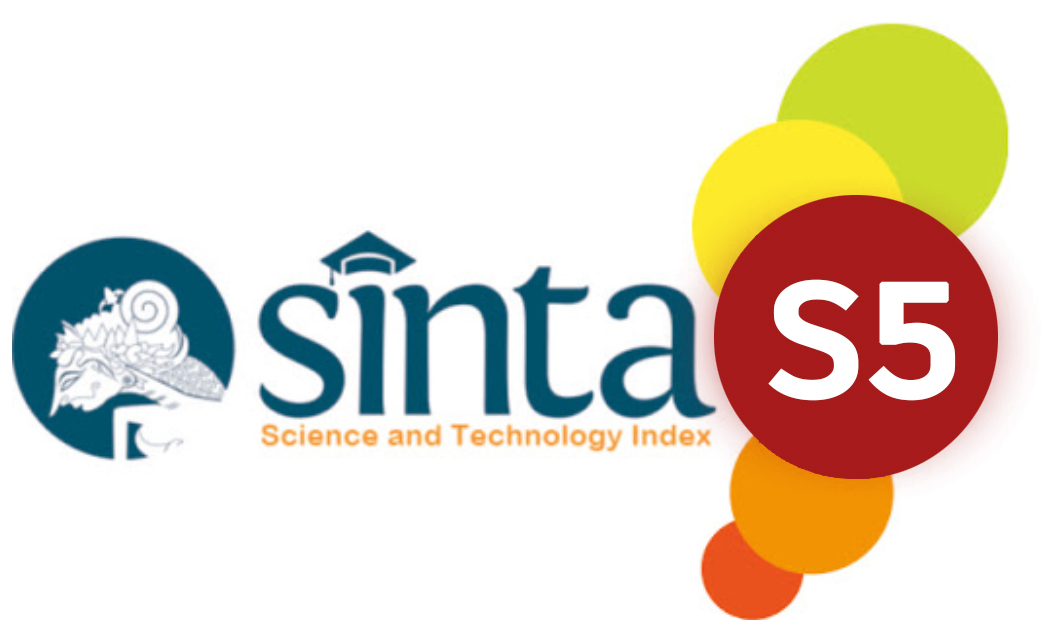Global Supply Chains and Geopolitical Realism: Huawei’s Survival Strategy against the US Ban
DOI:
https://doi.org/10.31004/riggs.v4i2.442Keywords:
Boycott, China, Huawei, Technology, United StatesAbstract
The US policy of isolating the Chinese technology company Huawei has significantly transformed the company’s global business operations. This conflict extends beyond business interests, touching on broader geopolitical dynamics between states. This research aims to examine the impact of the US ban on Huawei’s global supply chain and analyze how the company has adapted through strategic responses. Employing a descriptive qualitative method with a literature study approach, this study analyzes secondary data from various sources. Two main theoretical frameworks guide the analysis: Global Supply Chain Theory, which explores Huawei's dependency on US-origin technological components, and Realism Theory in International Relations, which interprets US actions as an effort to maintain its hegemonic position in the global technological order. The findings reveal that the US ban significantly disrupted Huawei's access to critical technologies, especially semiconductor chips. In response, Huawei adopted a survival strategy centered on supply chain diversification and domestic innovation. The research concludes that although the ban caused substantial short-term setbacks, Huawei demonstrated resilience through long-term strategic adaptation. The novelty of this study lies in its integration of political economy and international relations perspectives to explain how a global technology company navigates geopolitical pressures and supply chain vulnerabilities.
Downloads
References
M. Ryan and S. Burman, “The United States–China ‘tech war’: Decoupling and the case of Huawei,” Glob. Policy, vol. 15, no. 2, pp. 355–367, May 2024, doi: 10.1111/1758-5899.13352.
L. Wang, “China’s Huawei in the Us-China Trade War in the Communications Sector Game,” Proc. 2022 2nd Int. Conf. Enterp. Manag. Econ. Dev. (ICEMED 2022), vol. 656, no. Icemed, pp. 485–497, 2022, doi: 10.2991/aebmr.k.220603.078.
C. A. Ford, “U.S. National Security Export Controls and Huawei: The Strategic Context in Three Framings,” US, 2020. [Online]. Available: https://www.state.gov/wp-content/uploads/2020/06/T-Paper-series-DPR-Formatted-508.pdf
L. Kano, E. W. K. Tsang, and H. W. chung Yeung, “Global value chains: A review of the multi-disciplinary literature,” J. Int. Bus. Stud., vol. 51, no. 4, pp. 577–622, 2020, doi: 10.1057/s41267-020-00304-2.
A. Hmaidi, “Huawei is Quietly Dominating China’s Semiconductor Supply Chain,” Conf. Chinese Natl. Innov. Techno-Industrial Ecosyst., vol. 1, no. 1, 2023, [Online]. Available: https://merics.org/sites/default/files/2024-04/Hmaidi-Huawei Supply Chain-04.05.24.pdf
G. Gereffi, “Global value chains in a post-Washington Consensus world,” Rev. Int. Polit. Econ., vol. 21, no. 1, pp. 9–37, 2014, doi: 10.1080/09692290.2012.756414.
J. Melissen, The New Public Diplomacy: Between Theory and Practice. UK: Palgrave Macmillan, 2005. doi: 10.1057/9780230554931_1.
R. O. Keohane and J. S. Nye, Power and Interdependence, 4th ed., vol. 11, no. 1. Boston: Longman Pearson, 2011. [Online]. Available: http://scioteca.caf.com/bitstream/handle/123456789/1091/RED2017-Eng-8ene.pdf?sequence=12&isAllowed=y%0Ahttp://dx.doi.org/10.1016/j.regsciurbeco.2008.06.005%0Ahttps://www.researchgate.net/publication/305320484_SISTEM_PEMBETUNGAN_TERPUSAT_STRATEGI_MELESTARI
D. Drezner, “Power and International Relations: a temporal view,” Eur. J. Int. Relations, vol. 27, no. 1, pp. 29–52, Mar. 2021, doi: 10.1177/1354066120969800.
J. S. Nye, “Public Diplomacy and Soft Power,” Ann. Am. Acad. Pol. Soc. Sci., vol. 616, no. 1, pp. 94–109, Mar. 2008, doi: 10.1177/0002716207311699.
H. Wijayati and A. D. Murdani, “Indonesian Economic Development towards Global Value Chains,” Int. J. Trend Sci. Res. Dev., vol. 5, no. 2, pp. 218–223, 2021, [Online]. Available: https://www.ijtsrd.com/papers/ijtsrd38417.pdf%0Ahttps://www.ijtsrd.com/economics/other/38417/indonesian-economic-development-towards-global-value-chains/hasna-wijayati
Word Bank, Reviving growth, no. April. Washington D.C.: The World Bank, 2023.
R. Jervis, “Realism in the Study of World Politics,” Int. Organ., vol. 52, no. 4, pp. 971–991, 1998, doi: 10.1162/002081898550707.
I. Alon, W. Zhang, and C. Lattemann, “The Case for Regulating Huawei,” FIIB Bus. Rev., vol. 10, no. 3, pp. 202–204, 2021, doi: 10.1177/2319714520984666.
A. Muratbekova, “GEOPOLITICS VERSUS TECHNOLOGY : THE CASE OF HUAWEI,” Eurasian Res. Inst., vol. 271, no. February, 2020.
S. A. Seoane, A. G. Miranda, L. Goset, and N. P. Marzá, “THE U.S. SANCTION ON HUAWEI Project code: EME06 DECLARATION OF AUTHORSHIP AND ORIGINALITY,” 2021, [Online]. Available: http://repositori.upf.edu
Huawei, “Huawei’s Annual Reports 2023,” 2023.
The Guardian, “Google blocks Huawei access to Android updates after blacklisting,” The Guardian, 2019. [Online]. Available: https://www.theguardian.com/technology/2019/may/19/google-huawei-trump-blacklist-report
S. Nadella, “US sanctions results in revenue decline for Huawei in 2021,” Economic Times. Accessed: Mar. 01, 2025. [Online]. Available: https://economictimes.indiatimes.com/news/international/us/us-sanctions-results-in-revenue-decline-for-huawei-in-2021/articleshow/90502433.cms
Y. K. Tse, K. Dong, R. Sun, and R. Mason, “Recovering from geopolitical risk: An event study of Huawei’s semiconductor supply chain,” Int. J. Prod. Econ., vol. 275, p. 109347, Sep. 2024, doi: 10.1016/j.ijpe.2024.109347.
I. Clay and R. D. Atkinson, “Wake Up, America: China Is Overtaking the United States in Innovation Capacity,” Inf. Technol. Innov. Found. January, vol. 23, no. November, 2023, [Online]. Available: https://itif.org/publications/2023/01/23/wake-up-america-china-is-overtaking-the-united-states-in-innovation-capacity/
O. S. Christie, J. Jakobsen, and T. G. Jakobsen, The US Way or Huawei? An Analysis of the Positioning of Secondary States in the US-China Rivalry, vol. 29, no. 1. Springer Netherlands, 2023. doi: 10.1007/s11366-023-09858-y.
S. Dutta, “A Review of Literature of Global Value Chains,” SSRN Electron. J., pp. 1–9, 2021, doi: 10.2139/ssrn.3784163.
M. Scholten, “Complex Global Value Chains and Economic Interdependence: A New Look at the Opportunity Costs Argument,” Virginia, 2023.
J. H. dan T. S. G. Gerrefi, “The Governence of Global Value Chains,” Rev. Int. Polit. Econ., pp. 78–104, 2005.
M. Kang and A. R. Stephens, “Supply chain resilience and operational performance amid COVID-19 supply chain interruptions: Evidence from South Korean manufacturers,” Uncertain Supply Chain Manag., vol. 10, no. 2, pp. 383–398, 2022, doi: 10.5267/j.uscm.2021.12.013.
Z. Peng and S. Zhang, “Challenges for Huawei to Go Global Under the Trade Disputes,” Proc. 2021 3rd Int. Conf. Econ. Manag. Cult. Ind. (ICEMCI 2021), vol. 203, no. Icemci, pp. 1424–1433, 2022, doi: 10.2991/assehr.k.211209.232.
K. H. Zhang, “Geoeconomics of US-China tech rivalry and industrial policy,” Asia Glob. Econ., vol. 4, no. 2, p. 100098, Jul. 2024, doi: 10.1016/j.aglobe.2024.100098.
Downloads
Published
How to Cite
Issue
Section
License
Copyright (c) 2025 Hasna Wijayati, Andika Drajat Murdani

This work is licensed under a Creative Commons Attribution 4.0 International License.




























